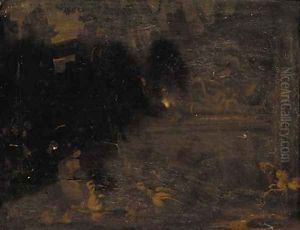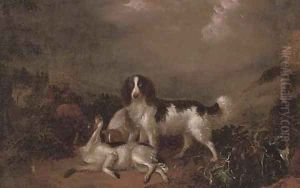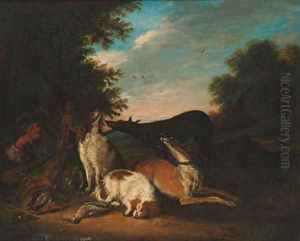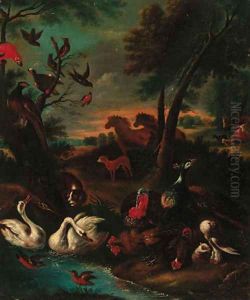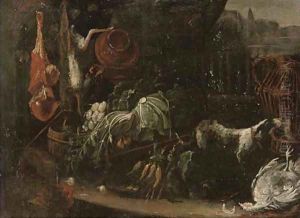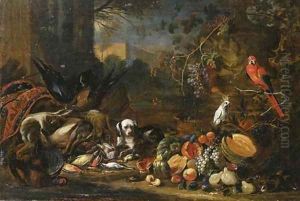Adriaen De Gryeff Paintings
Adriaen de Gryeff was a Flemish Baroque painter, born in 1657 in Antwerp, Belgium, a prominent center of art and commerce in the 17th century. Although not as well-known as some of his contemporaries, de Gryeff made a name for himself in the niche of animal painting, a genre that was gaining popularity during this period. His works often depicted hunting scenes, still lifes, and animals, showcasing a keen observation of nature and a talent for capturing the essence of his subjects.
De Gryeff's artistic journey began under the tutelage of the painter Nicasius Bernaerts, a former student of the renowned animal painter Frans Snyders. Under Bernaerts' guidance, de Gryeff honed his skills in painting animals with great detail and lifelikeness, which became his trademark. His training placed him in a tradition of Flemish painters who were celebrated for their ability to depict the natural world with vibrancy and realism.
After his apprenticeship, de Gryeff's reputation grew, and he was commissioned to work on various projects, including creating decorative pieces for the homes of the wealthy and for public buildings. Despite the fact that he spent most of his life in Antwerp, his works also found their way into collections across Europe, reflecting the widespread appeal of his animal subjects and the high regard in which he was held.
De Gryeff's paintings typically showcased a mastery of texture and color, with dynamic compositions that brought his depictions of the animal kingdom to life. He had a particular talent for rendering fur and feathers, which added a tactile quality to his work and made his representations particularly engaging for viewers.
Adriaen de Gryeff died in 1722 in Antwerp. While his name might not be as recognizable as some of the leading figures of Flemish Baroque art, his contributions to the genre of animal painting are significant. Today, de Gryeff's works can be found in various museums, and they continue to be studied and appreciated for their artistic value and the insight they provide into the Baroque period's fascination with the natural world.
